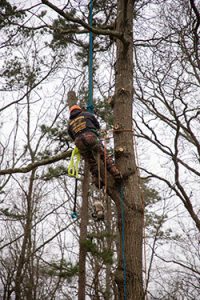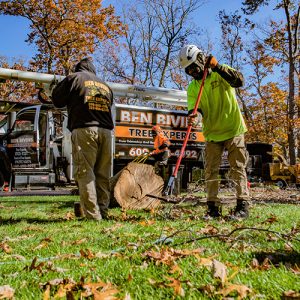As autumn sweeps through South Jersey, few sights are as breathtaking as the trees bursting into shades of reds, yellows, and oranges. For anyone who appreciate nature, this annual transformation is a reminder of how intricate and fascinating nature truly is. While many people enjoy the display, few stop to consider what actually causes leaves to change color. Understanding this process not only deepens your appreciation for the season but also highlights the importance of professional care from tree companies Galloway residents trust. Healthy trees produce more vibrant colors, and proper maintenance ensures they remain strong enough to endure the changing seasons. We’re going to uncover the science behind fall foliage and share why caring for your trees year-round is essential to keeping your property beautiful and balanced.
The Science of Color-Changing Leaves
The secret to fall’s color palette lies within the leaves themselves. During spring and summer, trees produce chlorophyll. This is the green pigment responsible for capturing sunlight and driving photosynthesis which is the process that allows trees to convert sunlight into energy. As the days shorten and temperatures drop, chlorophyll production slows down. Eventually, the green pigment fades away, revealing other pigments that were always present but hidden.
Carotenoids bring out shades of yellow and orange, while anthocyanins create red and purple hues. The combination of these pigments, along with variations in temperature and sunlight, results in the vivid spectrum we associate with autumn. A warm, sunny fall with cool nights often produces the most brilliant colors because these conditions enhance anthocyanin formation. Trees that are stressed, diseased, or lacking nutrients, however, may show dull or premature color changes—another reason why professional tree care is so important.
Environmental Factors That Affect Fall Color
Not all trees change color at the same time or in the same way. Species like maples, sweetgums, and oaks each have their own color signatures and timing. Environmental conditions such as rainfall, temperature swings, and even soil quality all influence how leaves transition. Drought, for example, can cause leaves to drop early, cutting the color show short. Meanwhile, too much rain can dull pigments and shorten the viewing season.
In Galloway and the surrounding areas, where native hardwoods mix with decorative ornamentals, these variations are especially noticeable. Homeowners who invest in regular pruning, fertilization, and pest management from tree companies Galloway locals rely on often see stronger, healthier trees that produce more consistent color each year. The same maintenance that supports lush green foliage in summer also contributes to richer hues in fall.

Tree Companies Galloway Tips for Healthier Fall Foliage
To get the best color display each year, tree health is key. Here are a few practices professionals recommend:
- Schedule seasonal pruning. Proper pruning removes deadwood and improves air circulation, promoting balanced growth.
- Fertilize in the fall. Providing essential nutrients helps trees recover from summer stress and prepare for winter dormancy.
- Mulch and water properly. A properly applied layer of mulch retains soil moisture and protects roots as temperatures drop.
- Monitor for pests and disease. Insects or fungal infections can affect pigment development and cause premature leaf drop.
If your trees show uneven coloring or early leaf loss, it may signal an underlying issue that requires expert attention.
A Season to Appreciate and Care for Your Trees
The magic of autumn is fleeting, but the care you give your trees lasts far beyond the season. Healthy trees are not just beautiful. They add value to your property, provide shade, and contribute to the overall balance of the local environment. Working with experienced tree companies Galloway residents recommend—like Ben Bivins Tree Experts—ensures that your trees remain vibrant through every season. Whether it’s pruning, fertilization, or full maintenance programs, their team has the knowledge to preserve your landscape’s natural beauty.
As you admire the colorful canopy this fall, take a moment to appreciate the science and care that make it possible. To learn more about maintaining your trees or to schedule professional service, visit our Galloway tree service page for more information.
Most homeowners call a tree company when they have a problem that needs solving. Maybe there is a dead tree, a leaning pine, or a storm-damaged limb hanging a little too close to the roofline. Now, the view is better and the property is cleaner, but what exactly happens to the tree? The process that takes place next is as important as the removal itself. Disposal, recycling, mulching, and site restoration are all part of the full-service experience that quality Freehold tree companies like Ben Bivins Tree Experts provide. Understanding the behind-the-scenes of what happens after tree removal can help you appreciate the importance of hiring the right company. Let’s walk through what really happens after the chainsaws go quiet, and how your former tree might be turned into something useful, beneficial, and even beautiful.

Step 1. Breaking It All Down
Tree removal doesn’t happen in one fell swoop. The safest way to handle a large tree is to take it apart in sections.
- Cutting of canopy branches is first
- Mid-level limbs follow next
- Creating manageable logs by sectioning the trunk comes next
- Lastly, our tree experts gather smaller twigs, leaves, and brush separately
This organized breakdown allows us to sort the tree into categories: usable wood, wood chips, mulch material, and waste.
Step 2. Chipping and Mulching
One of the most common and sustainable practices among local tree companies is turning brush and smaller limbs into wood chips or mulch. We run branches and smaller limbs through a chipper. The resulting material is used in landscaping, erosion control, or composting. Additionally, many local homeowners even request to keep the mulch for their own garden use. This eco-friendly step reduces landfill waste and gives your former tree a second life as long as the tree is free from pests and diseases. Rest assured, we’ll let you know if this option is safe for your yard.
Step 3. Trunk and Log Disposal
What about the larger sections of trunk? Not every tree produces usable lumber. However, nearly all of it can be repurposed somehow. We handle these heavier logs in several ways:
- Depending on the species, straight sections may be milled into planks or beams for woodworking
- Whether for resale or donation, most tree companies in Freehold cure and cut hardwood logs for firewood
- If not viable for lumber or firewood, coarse mulch is an option for some logs
- Many municipalities in New Jersey accept tree waste as part of green recycling programs
Stump 4. Stump Grinding or Removal
The stump is the last part to handle. Stump grinding is the most common method. A large blade grinds the stump down 4–6 inches below soil level. Complete stump removal is more labor-intensive, involving excavation of roots and base. The mulch created during stump grinding is left behind or hauled away, depending on the homeowner’s preference. The remaining area can be treated however the homeowner wants. For example, soil can be leveled and seeded, the area can be prepped for a new tree, or a new garden bed can be created.
Step 5. Cleaning the Site
Professionalism doesn’t stop at tree removal. One of the things that sets top-tier Freehold tree companies apart is how they leave your property once the work is complete. After tree breakdown and disposal, our experts rake and clear away all debris as well as blowing clean driveways, sidewalks, and patios. Next, the work area is inspected and equipment tracks are minimized or repaired. The result is that your yard is safer and often healthier than before. Many homeowners are surprised to see how much cleaner and more open their property feels after proper removal and cleanup.
 Not All Freehold Tree Companies are Created Equal
Not All Freehold Tree Companies are Created Equal
When you’re researching Freehold tree companies, consider more than just the price of the job. Ask what happens after the cut. A truly professional company will provide safe removal, respectful cleanup, and responsible disposal. At Ben Bivins Tree Experts, we’ve built a reputation on quality, honesty, and a commitment to the environment. Whether it’s a hazard tree, a dying oak, or just a backyard spruce that is overgrown—we’ll treat your tree with the care it deserves from start to finish.


